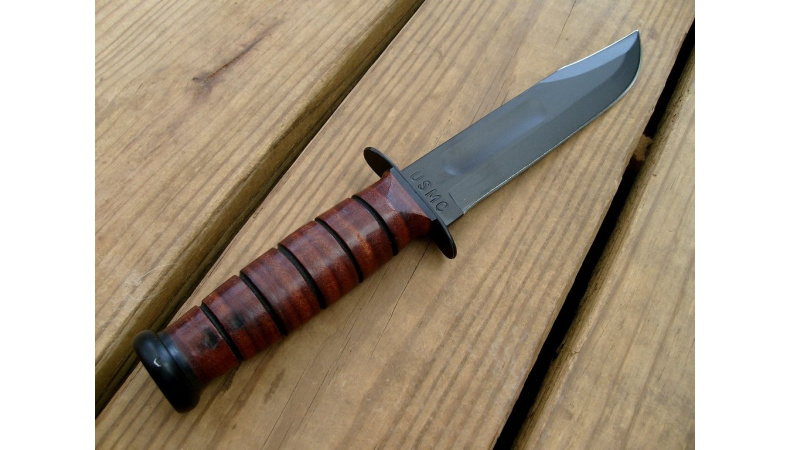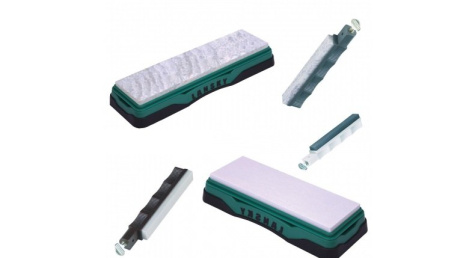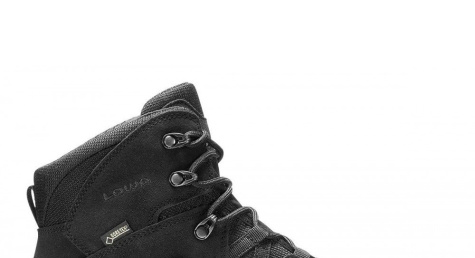How to choose a knife with a fixed blade
In this article, we will discuss the procedure for selecting a knife with a fixed blade in details. We will go through the basic division according to the method of use and the parameters that you should look for when choosing.

Knives with a fixed blade are especially popular in the following categories:
- concealed carry
- survival knives
- rescue knives
- combat knives
- daggers
- machetes
- throwing knives
- training knives
Edge
The edge can be on one or both sides of the blade (for combat and self-defense knives). The smooth edge can be easily sharpened, the serrated blade cuts well ropes and cords and also leaves less healing wounds on the body. The combined blade combines smooth and serrated edges, offers a wider range of uses but is harder to grind - it is practically impossible to grind it well at home.
Steel
The knives are made of various steels, to which we have devoted another article. You can read it here.
Fulltang design
Such a knife has a blade (or steel from a blade) extended up to the handle, is stiffer and it is practically impossible to break it during normal work. It is also much better controlled and more balanced.
Handle material
Choose the material according to use and popularity. Some prefer kraton and other extremely strong and light new materials, some people have a good feeling from a leather handle in their hand. Leather is not though suitable e.g. for anglers, due to moisture and water. The opposite case is with a rubber handle, that is not as hard as kraton or zytel, but does not slip in the hand when working. Another variant is a paracord handle, that can be used as a rope in case of emergency.
Handle size
The size must be chosen according to the size of the hand and the expected use. Larger handles are suitable for work, but for hidden use, for example, it is advisable to have a narrow and inconspicuous handle.
Housing
The cases are included in the package of most knives in our shop. What is important to most customers is the wearing system. Military knives are usually worn on a MOLLE binding, while civilian ones are worn on a belt, sometimes combinations exist.
Another thing is the material of the case, but it is also rather a matter of taste. Cases made of modern plastic materials and leather cases are popular. With survival knives, there are various pockets on the shells with striking strips and other gadgets.
Blade and handle color
It is a matter of personal taste. It is important that you like the knife, or fit the rest of the gear. Military knives are popular in coyote and olive for camouflage, but survival knives, e.g., are often orange because it's a nice to find knife easily when lost in nature.
Rope hook
It is used for quick cutting of ropes or belts. It is suitable for soldiers wounded in fight or rescuers, because it can be used to cut fabric without damaging the tissue beneath it.
Blade length
The length of the blade is a matter of the owner’s consideration. A large knife looks rough and can be used to chop wood, for example. On the contrary, for example, you will cut sausages for a campfire with it harder. Carrying in a case will of course be more comfortable with a smaller knife.
Blade thickness
A thicker blade lasts longer, but increases weight.
Total knife length
The overall length of the knife affects wearing and working. It is ideal to choose a reasonable compromise.
Weight
The lower weight of the knife will not burden you so much when traveling, for example on a belt, but it will be harder to work with it. For example, when chopping wood, it makes a big difference.
Wearing system
Knives with a fixed blade are worn in a case that is either on a MOLLE binding or on a belt. Another system is carrying it on a thigh sling (usually combat and tactical knives), on the calf (usually diving knives) or in a cross sling to balance the weapon when concealed.
NSN (National Stock Number)
The 14-digit code indicates products that are approved by all NATO members for military use. With such goods, you are assured of the highest quality.
Ejector hook
It is used to expel game. Such a feature of the knife will be appreciated especially by hunters and possibly survivalists.



